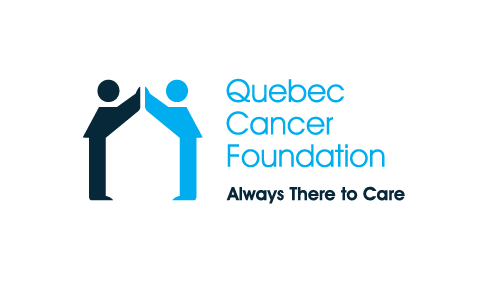Hormone therapy for breast cancer
The development of breast cancer is often influenced by certain hormones in the body such as estrogen and progesterone.
Estrogen and progesterone are the hormones responsible for, among other things, female attributes at puberty and the menstrual cycle. They are mainly produced by the ovaries. To produce estrogen, the ovaries must be stimulated by other hormones: FSH and LH. FSH and LH are produced by the pituitary gland under the influence of the hypothalamus. (The pituitary gland and hypothalamus are two small glands located in the brain).
Before proposing hormone therapy for breast cancer, the oncologist makes sure that the treatment will be effective. To determine this, a careful analysis is performed on cancer cells taken during the biopsy or removed during surgery. This analysis will verify, among other things, whether proteins called hormone receptors are present. Breast cancer cells may have receptors for estrogen (ER+), progesterone (PR+) or both. When a cancer cell has this type of receptor, the presence of the hormone can promote its growth. The analysis can determine whether or not each type of hormone receptor (estrogen and progesterone) is present and how much of each is present in the cancer cell.
Hormone therapy will be indicated only if the breast cancer hormone receptors are positive. The treatment consists of taking a medication that blocks hormone production, or blocks its action. It is most often taken orally.
More than two-thirds of all breast cancers contain estrogen and/or progesterone receptors. They are known as hormone-dependent cancers.
Objectives of hormone therapy
- To reduce the risk of hormone-dependent, non-invasive (in situ) breast cancer developing into invasive breast cancer;
- To reduce the risk of recurrence of hormone-dependent invasive breast cancer;
- To shrink a large hormone-dependent breast tumor prior to surgery;
- To treat hormone-dependent breast cancer that is advanced locally or has recurred;
- To relieve the pain or control the symptoms of hormone-dependent advanced or metastatic breast cancer.
Factors influencing the choice of hormone therapy and duration of treatment:
- Medical history;
- Menopausal status (menopausal or not);
- Stage and grade of cancer;
- Risk of relapse.
Hormonal therapy may sometimes be combined with a cell cycle inhibitor (a drug that prevents cells from multiplying) in the treatment of advanced or metastatic hormone-dependent breast cancer.
The type of medication, the dose prescribed, its combination with another drug and the duration of treatment are adapted to each situation.
Advantages of hormone therapy
- Treatment known to be effective in reducing the risk of breast cancer recurrence;
- Acts on both local and metastatic breast cancer;
- Can be administered together with other treatments to enhance their effectiveness (advanced or recurrent cancers);
- Relieves some of the symptoms of advanced breast cancer.
Disadvantages of hormone therapy
- May have side effects impacting quality of life;
- Some side effects are permanent.
Types of treatments
The majority of hormonal treatments consist of medication. The two most common types of drugs used to treat breast cancer are anti-estrogens and aromatase inhibitors.
Anti-estrogens
These are drugs that bind directly to estrogen receptors on cancer cells. They block these receptors to prevent the cancer cells from utilizing estrogen.
- Tamoxifen
Tamoxifen (Nolvadex, Tamofen) is the most commonly used anti-estrogen medication. It is the drug of choice for non-menopausal women. It is also frequently prescribed for postmenopausal women.
Tamoxifen slightly increases the risk of endometrial cancer, deep vein thrombosis (DVT) and stroke. For this reason, oncologists need to assess the risks and benefits of this drug before offering it to women who have a personal or significant family history of these conditions.
- Fulvestrant
Fulvestrant (Faslodex) is injected intramuscularly and is used to treat postmenopausal women whose breast cancer has progressed after tamoxifen therapy. It is also prescribed for postmenopausal women with locally advanced or metastatic breast cancer that has never been treated with hormonal therapy.
Aromatase Inhibitors
Aromatase is an enzyme that allows estrogen to be produced by organs other than the ovaries, such as fatty tissue and the adrenal glands. Aromatase inhibitors are drugs that prevent the production of aromatase or block its action, resulting in decreased estrogen levels in the body.
Aromatase inhibitors are prescribed only to postmenopausal women. They are not effective in non-menopausal women because they do not act on the ovaries, where most estrogen is produced prior to menopause.
These drugs are administered orally.
The most commonly prescribed medications for the treatment of hormone-dependent breast cancer are:
- Letrozole (Femara);
- Anastrozole (Arimidex);
- Exemestane (Aromasin).
This class of drugs can cause or increase loss of bone density (osteoporosis). Therefore, women receiving an aromatase inhibitor should also receive vitamin D and calcium supplements. Bone density and risk of fracture should be monitored periodically. For example, women should usually undergo a bone density test (bone densitometry) before starting treatment. These examinations need to be repeated and monitored on a regular basis, especially for women whose personal or family medical history puts them at risk of developing osteoporosis.
Luteinizing hormone-releasing hormone (LHRH) analogs
LH-RH agonists (or analogs) are drugs that stop the ovaries producing estrogen. They are prescribed only to non-menopausal women. They bring about temporary menopause. They are injected subcutaneously over a 3- to 5-year period:
- Goserelin (Zoladex);
- Leuprolide (Lupron, Lupron Depot, Eligard);
- Buserelin (Suprefact).
This drug may sometimes be used in combination with tamoxifen or an aromatase inhibitor in women who have not yet reached menopause following chemotherapy, such as young women under 35 years of age or those with cancer that has spread to the nodes.
Non-drug treatments
A non-drug hormone therapy treatment may be used in premenopausal women. This consists of direct intervention on the ovaries to suppress estrogen production:
- Surgical removal of the ovaries (oophorectomy) is the preferred treatment for older, premenopausal women who no longer want children.
- Radiotherapy is rarely used for this purpose, but may be proposed for women who cannot be operated upon.
These treatments result in permanent, irreversible menopause.
Treatment based on menopausal status
- Hormone therapy for non-menopausal women
The drug of choice for women with hormone-dependent breast cancer is tamoxifen, which is prescribed for a period of 5 to 10 years.
After 5 years, the drug can sometimes be stopped, but depending on the type of cancer and its risk of recurrence, the treatment can be extended for another 5 years.
If treatment needs to be prolonged, tamoxifen will be re-prescribed to women who are not postmenopausal. If they reach menopause in the meantime, the oncologist may continue tamoxifen or switch to an aromatase inhibitor.
- Hormone therapy for postmenopausal women
The hormone therapy prescribed to postmenopausal women is either tamoxifen or an aromatase inhibitor for a period of 5 to 10 years.
Oncologists may adopt different approaches in deciding the medication best suited to the individual’s condition. Sometimes a single medication is used for 10 years and sometimes there is alternation between medications.
IMPORTANT!
Advanced endometrial and ovarian cancers can also be treated with the various hormone therapies described above, either alone or in combination with another treatment.
Sources:
Anti-Hormonal Therapy and Breast Cancer
Hormonal therapy for breast cancer
Hormone Therapy for Breast Cancer
Hormonal therapy
VERZENIO™ (abemaciclib) available in Canada for metastatic breast cancer































